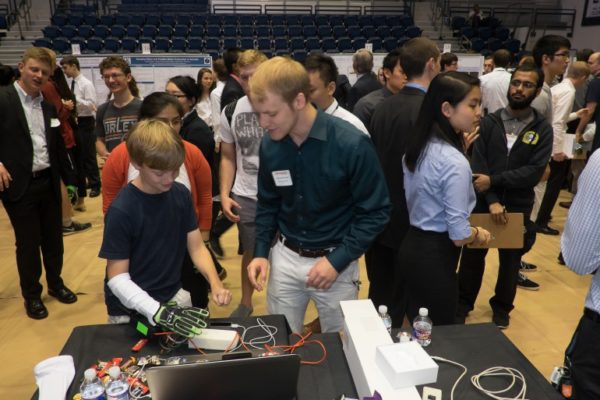This VR glove uses air bladders to create haptic feedback

Tiny air bladders found their way into virtual reality with the development of a VR glove prototype that gives off haptic feedback.
Engineering students at Rice University have been working on an early prototype of a virtual reality glove able to provide tactile feedback for various VR applications. This VR glove, called Hands Omni, was developed thanks to an initiative by Virtuix, a gaming technology company focusing on VR. This same VR company is responsible for the well-known Virtuix Omni Treadmill – an omnidirectional treadmill that is on the way for mainstream VR adoption. Virtuix aims to make the Hands Omni a consumer VR product that is targeted to enhance VR interactions in the future.

Basically, Hands Omni works by inflating and deflating tiny air bladders embedded into strategic parts of the glove, giving the illusion of touching an object in a virtual environment as well as creating the ability to distinguish various physical characteristics of an object. With the Hands Omni linked to a VR headset, the user can manipulate a virtual object as if it is done outside virtual reality.
Trying to hold an object in virtual reality – or even touch it – is a fancy thing in VR that can only be made possible with specialized accessories, such as haptics-enabled gloves. Hands Omni tries to replicate the natural feeling of holding an object, as well as feeling its texture and telling how heavy or light it is, thanks to the ability of these tiny air bladders to create tactile feedback. This feature is especially useful in VR applications such as in gaming, where activities that involve manipulating objects could include firing your enemies in a war field using a rifle, or simply throwing a ball in a friendly ball match.

Currently in the prototype stage, the Hands Omni tips the scale at 350 grams, or about 12 ounces. One key feature of the Hands Omni is that it is fully wireless – there are no dangling wires or cables – enabling greater freedom of movement for the user. According to the creators of Hands Omni, the VR glove is comfortably light enough such that the user will not be able to tell that it’s really there. Ergonomics is one key aspect in the VR experience, and Hands Omni hits the right spot in comfort. Another VR glove in development is the Gloveone, developed by NeuroDigital Technologies, which works in almost the same manner as the Hands Omni.
VR gloves pave the way for the future of VR haptics. With the latest advancements in VR headsets, haptics in VR is following the trend – by helping to make amazing VR experiences that recreate sensations we only feel in true reality.
For more information on the Hands Omni VR glove, please visit the following websites:
http://oedk.rice.edu/Sys/PublicProfile/25532450/1063096
http://news.rice.edu/2015/04/22/gamers-feel-the-glove-from-rice-engineers/
http://www.engadget.com/2015/04/27/hands-omni-vr-glove/

